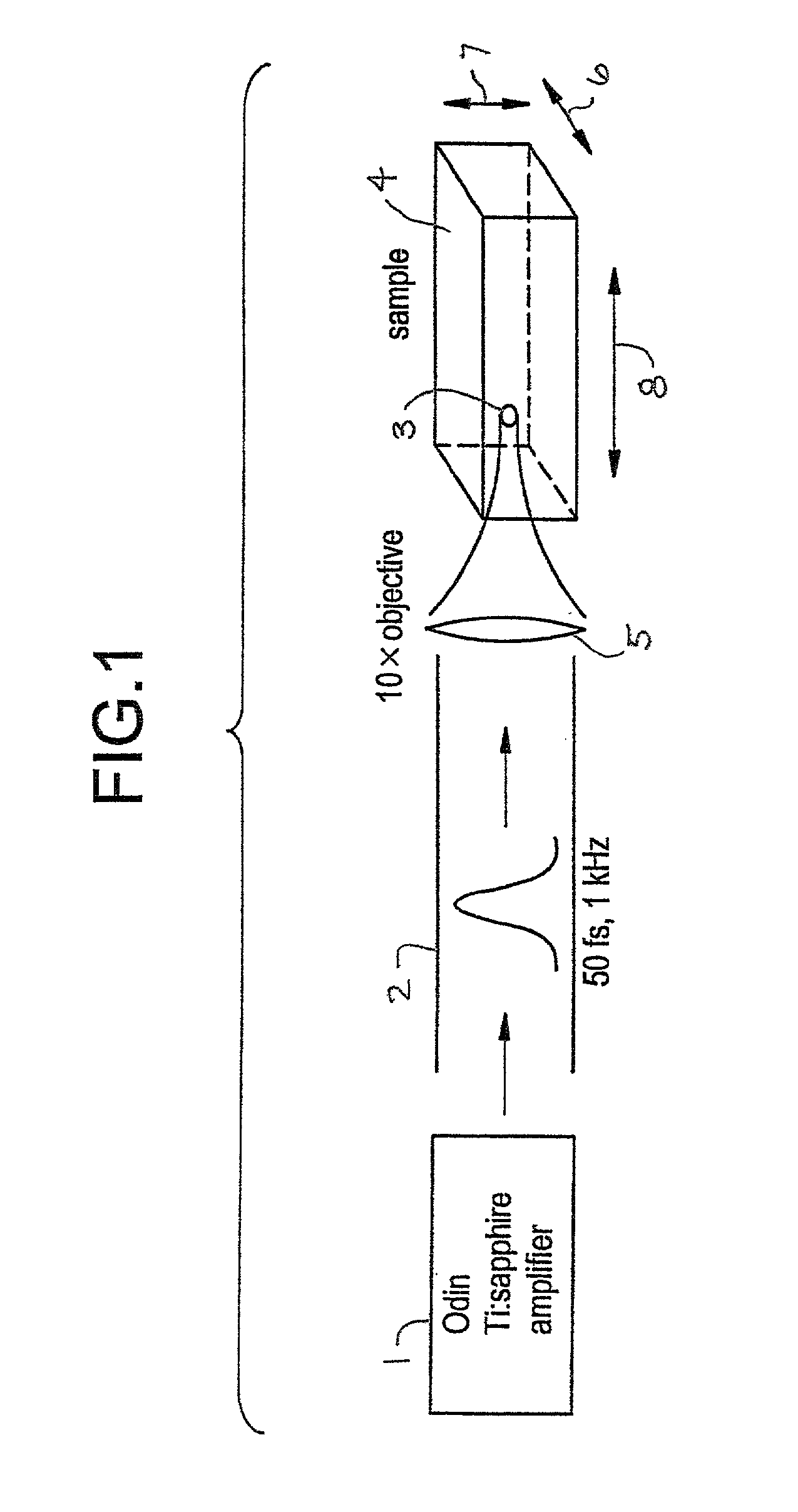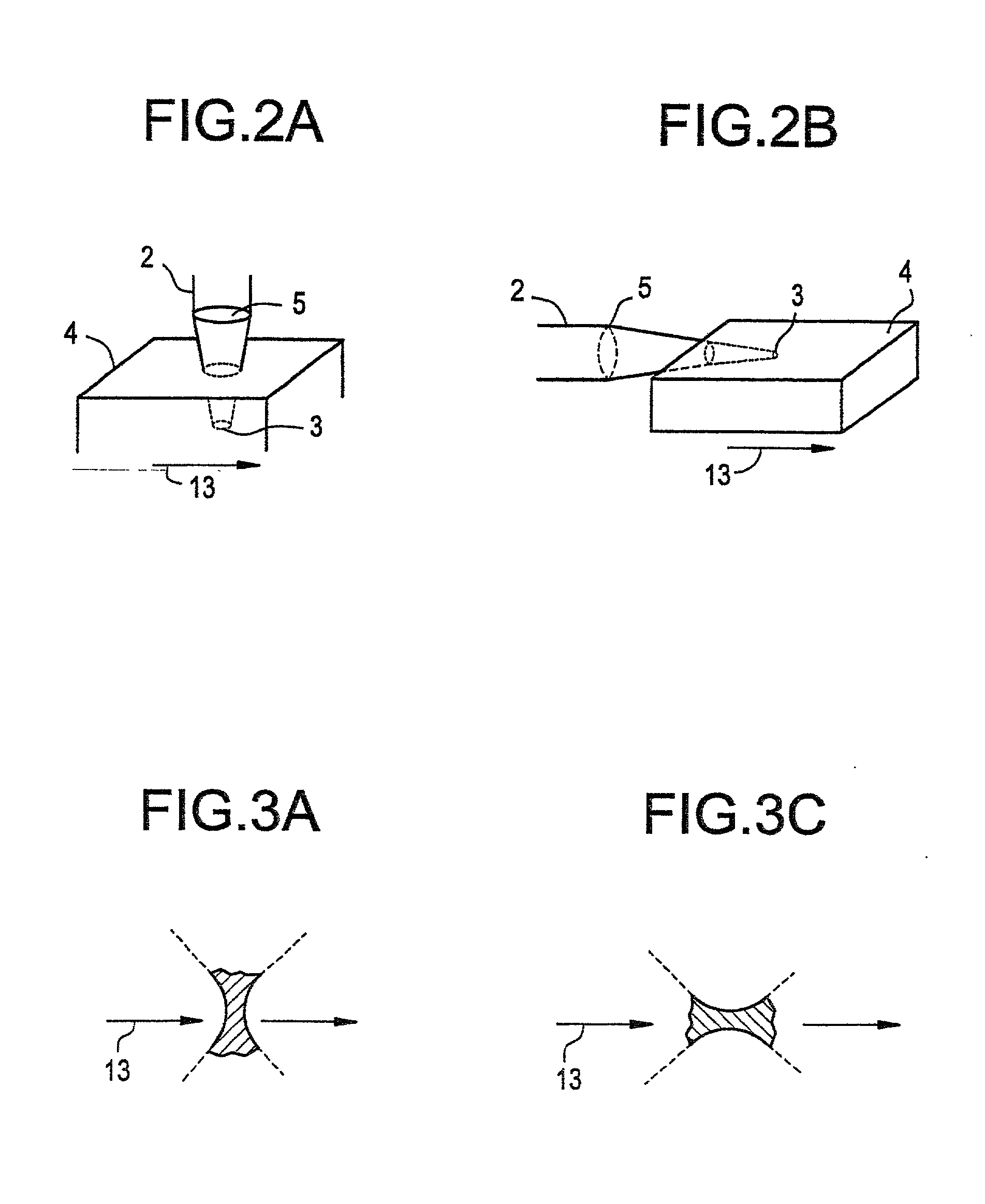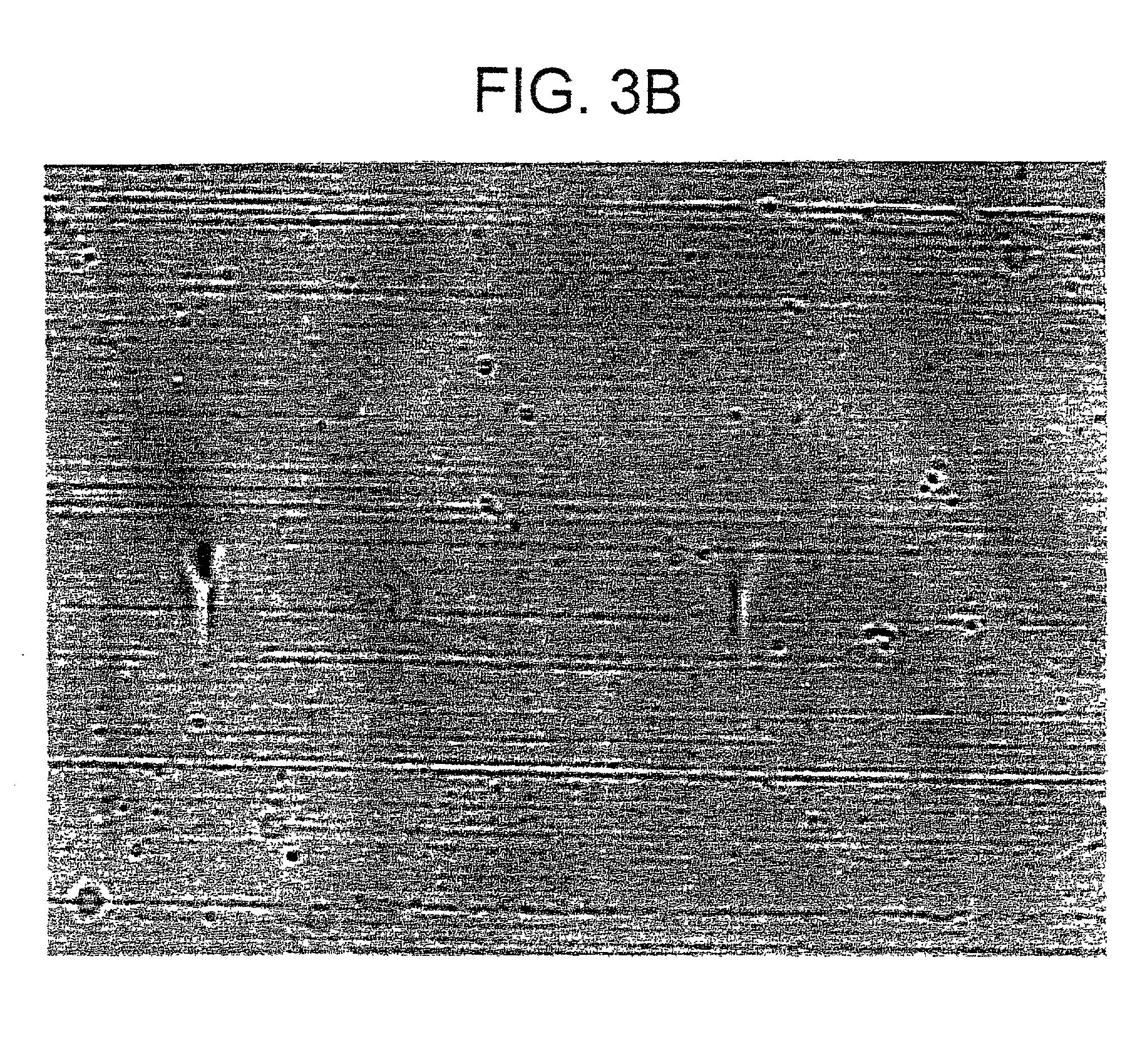Direct writing of optical devices in silica-based glass using femtosecond pulse lasers
a technology of optical devices and pulse lasers, applied in photomechanical devices, instruments, manufacturing tools, etc., can solve the problems of increase in pulse energy, physical damage to glass, etc., and achieve the effect of reducing the waveguide properties of glass
- Summary
- Abstract
- Description
- Claims
- Application Information
AI Technical Summary
Benefits of technology
Problems solved by technology
Method used
Image
Examples
example 2
[0067] A 830 nm laser was used to deliver 40 fs pulses at a 1 kHz repetition rate. The energy per pulse was from about 1 .mu.J to about 5 .mu.J. The beam was focused into the glass below the surface with a lens having a numerical aperture of 0.16 in air. The sample was moved under the beam at a rate of about 5 .mu.m / s to about 100 .mu.m / s. The experimental conditions were kept constant for exposure to samples of fused silica and for 14 wt.% GeO.sub.2 -86 wt.% SiO2. The beam was focused about 1 mm below the surface of the glass. For samples irradiated at the same exposure conditions, the diameter of the laser-affected region of the germania-silica sample was about twice that of the fused-silica sample. From this result, we concluded that the germania-silica material was more sensitive to refractive index changes induced by ultra-fast laser exposure than fused silica.
example 3
[0068] Substrates of various glass compositions, i.e., SiO.sub.2 (Corning product 7980), 22 wt.% GeO.sub.2- 78 wt.% SiO.sub.2, and 9 wt.% B.sub.2O.sub.3- 91 wt.% SiO.sub.2, were exposed to focused laser radiation by the axial-write method. The laser wavelength was 830 nm. The pulse duration was 40 fs. The energy per pulse was 1.0 .mu.J. The repetition rate was 1 kHz. The scan speed was 20 .mu.m / s. After exposure, the induced refractive index change at 633 nm was estimated from the far-field pattern of the waveguide produced. The induced refractive index change results are tabulated below in Table 1. The annealing point of each of these materials is also reported in Table 1.
1TABLE 1 Induced refraction index change (Example 3) Glass Composition (% based on Annealing Point Induced Refractive weight) (.degree. K) Index Change SiO.sub.2 (Corning 7980) 1261-1323 0.0003 78%SiO.sub.2--22%GeO.sub.2 1311 0.0009 91%SiO.sub.2--9%B.sub.2O.s-ub.3 1073 0.0030
example 4
[0069] A sample of 9 wt.% B.sub.2O.sub.3- 91 wt.% SiO.sub.2 glass was exposed to focused laser radiation by the axial-write method. The laser wavelength was 830 nm. The pulse duration was 40 fs. The energy per pulse was 1.0 .mu.J. The repetition rate was 1kHz. The scan speed was 20 .mu.m / s. A photomicrograph of the far-field pattern of this sample is shown at FIG. 7. The double-lobed pattern is indicative of the propagation of a higher order mode. Insofar as the silica and germania samples of Example 2 showed single-lobe patterns, the effective refractive index change of the borate sample must have been greater than that of the other two samples to support the additional mode.
PUM
| Property | Measurement | Unit |
|---|---|---|
| pulse energy | aaaaa | aaaaa |
| pulse energy | aaaaa | aaaaa |
| scan speed | aaaaa | aaaaa |
Abstract
Description
Claims
Application Information
 Login to View More
Login to View More - R&D
- Intellectual Property
- Life Sciences
- Materials
- Tech Scout
- Unparalleled Data Quality
- Higher Quality Content
- 60% Fewer Hallucinations
Browse by: Latest US Patents, China's latest patents, Technical Efficacy Thesaurus, Application Domain, Technology Topic, Popular Technical Reports.
© 2025 PatSnap. All rights reserved.Legal|Privacy policy|Modern Slavery Act Transparency Statement|Sitemap|About US| Contact US: help@patsnap.com



